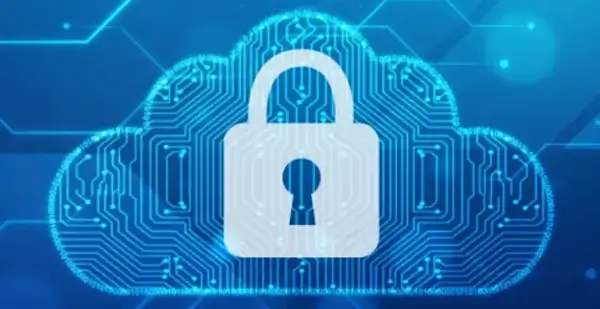
Protecting sensitive data from malicious code and dangerous third parties is a critical task rather than something that should be taken for granted. With that in mind, it's an important - yet often overlooked - aspect of security that users stay informed about what's happening in this niche.
After all, data security threats evolve at a staggering pace, and 2023's future cyber-attacks are bound to be as inventive as they've ever been. This means that learning as much as possible about potential cybersecurity threats is a must, the first step toward which will be understanding what the next year's cyber-security landscape might look like.
It is, of course, impossible to know precisely what cyber-security challenges might await in the coming months. However, it is certainly possible to try and get ahead of almost all of them by exploring what contemporary cybersecurity professionals are saying.
Naturally, it's essential to learn from the history of website security breaches because malicious elements are bound to attempt to use these same strategies again, sooner or later. They did work once, and not everyone is security-minded enough to keep up with all the latest exploits and breaches.
Considering the above, this article will discuss these cyber-security challenges by focusing on six disparate categories of modern cyber-security. There's a lot of ground to cover, from cloud security, specifically, to the increasingly more complex phishing attack methods. This guide will, however, give you everything you need to get a good, generalized idea of what we may face throughout 2023.
1. Blockchain and Cryptocurrency Attacks
Setting aside all the buzzwords and marketing-driven nonsense, blockchain technology is bound to be a hugely important aspect of the future Internet infrastructure. Cryptocurrencies are an extension of this alternative approach to centralized network structures. There's no separating the two regarding brass tacks, and they should be considered in the same cyber-security context.
The reason malicious actors would target blockchain tech is rather obvious: the availability of digital currencies. As enterprise-grade users and individuals discover new ways of leveraging the blockchain and making good use of crypto, so to do malicious third parties become more interested in breaching their respective defenses.
Eclipse and Sybil's attack vectors have been making headlines over the past year, highlighting crucial vulnerabilities that people are still largely unaware of. These data security breaches will only become more common until the general public catches on and compromises data security catches up to the real cutting edge.
2. Cloud Attacks

Keeping sensitive data on the cloud is often a delightful quality-of-life improvement for the end-user. In fact, cloud-based data storage may rightfully be considered the superior way of dealing with data security threats, as massive companies hosting said data could spend hundreds of millions of dollars on duly dealing with data breaches as they occur.
The problem, though, is that cloud-based data breaches do indeed occur, despite all the protections in place.
It will take way more effort for malicious actors to breach, say, Google or Amazon's own defense systems than to access sensitive information on a more anonymous operation. However, since these companies are massive honeypots of exceedingly valuable data, even half-heartedly attempting to get at their data storage solutions may pay off for a lucky hacker.
Cyber threats are often directed at massive companies for good reason. After all, even the best security teams make mistakes now and then. To say nothing of the extraordinary situations where data ends up hosted on cloud services completely unencrypted and unsecured. The recent Anker security crisis is a prime example of how cloud security messes up and why cyber threats focusing specifically on cloud services won't go anywhere anytime soon.
3. IoT Attacks
Internet of Things (IoT) devices represent one of the most flexible and pliable attack vectors for malicious third parties. Accessing sensitive information intact at a reduced cost and increased efficiency has always been a goal for attackers. IoT provides a stellar platform for attempting to pull off a stealthy yet highly efficient security breach. Worst of all, seeing where an IoT breach might come from is difficult.
In broad terms, IoT refers to a network of interconnected devices ranging from sensory inputs to mobile phones and smart gadgets. This can mean fridges, automatic hoovers, TVs, consoles, etc. IoT devices are particularly vulnerable to security vulnerabilities. Not every hardware provider keeps up with the latest and most significant security updates issued by first-party developers—a prime target for data breach instances.
As IoT proliferates further, IoT-based cyber threats will also grow more prominent and dangerous. It's doubtful that this trend will be diminished anytime soon. More and more network-enabled devices are being released to the market, each being a potential cloud vulnerability in its own right.
4. Phishing Scams

Phishing scams are a particular kind of social engineering attack that attempts to get sensitive information directly from people themselves. This means that phishing attacks are exceedingly unlikely to ever fall out of favor: security systems can get updated, and the firmware can be obfuscated, but the human psyche is provided as-is, meaning that it's often the weakest link in the chain of security — a prime target for malicious entities.
Those who've had experience with the recent surge of remote work opportunities may recognize that these kinds of workplace situations offer even greater leeway to a potential malicious third party, making it all the more critical that companies keep enforcing remote security policies around the clock.
A phishing attack often targets users' login details. Once the orchestrator has those, they can potentially gain access to sensitive information, the operational backend, and, as a worst-case scenario, bank account data. As ever, phishing attacks are here to stay for a long while.
Without proper precautions, your email inbox can be jammed with phishing and scam messages.
5. Ransomware Attacks
Ransomware attacks are perhaps the most insidious of this article's different attack vectors. What makes ransomware attacks particularly notable as a threat in 2023, however, is the ongoing war between Ukraine and Russia. Specifically, many ransomware attacks have historically fielded from Russian territories, and it is now exceedingly unlikely that Russia would enforce goodwill law cooperation with other countries.
Further, it is entirely within reason that state-sponsored cyber-attacks from Russia may begin affecting Western companies in various ways, ransomware being a potentially extremely profitable approach from the country's combative echelons' perspective. Also, Russia is bound to undergo an immense economic downturn, making malicious network activity all the more profitable for its criminal underbelly.
6. Software Vulnerabilities

There is never a shortage of software vulnerabilities on the market, which is highly unlikely to change until programming-focused artificial intelligence enters the marketplace as an assistant programmer (if that ever does happen). Bugs, outdated firmware, and unfixable structural weaknesses are all relatively common, and an appropriately motivated third party will exploit these issues for its own gain.
Of course, abusing software vulnerabilities isn't nearly as glamorous as mounting a cryptocurrency heist. Still, the old tried-and-true methods of digital banditry are as big of a mainstay as they are for a good reason: they work. 2021's Log4Shell is a prime example of how serious programming hitches can get.
While nothing of the kind has been discovered just yet, it's all but certain that next year's cybersecurity challenges will include a wide gamut of security issues, too. Problems will crop up not because of a genuine cybersecurity attack but because the software wasn't planned and/or executed correctly, allowing malicious entities ready access to valuable data.
In Closing
This summary should have provided ample context for discerning, security-minded readers. Setting this context aside, however, it's always worth remembering that Internet security risks are far too numerous and varied to be comprehensively summarized in a single article.
Malicious actors are numerous and inventive, and security precedents are being made and subsequently dismantled. Regardless, even though it's all but certain that a new threat could come up at any given time, awareness of existing problems and monitoring your network for vulnerabilities pay off more often than not.


 Copyright 2000-2025, WebSitePulse. All rights reserved.
Copyright 2000-2025, WebSitePulse. All rights reserved.